Social Protection
Context
The State of the World’s Cash 2020 report found:
- Working with, through and alongside social protection systems is now considered key to strengthening the humanitarian-development nexus and humanitarians are increasingly active in this space
- Practitioners find that the three biggest challenges to effective linkages are: (i) lack of coordination between the actors involved, (ii) social protection systems are not designed to respond to crises, (iii) humanitarian practitioners lack expertise in social protection
- Critically, there is no ‘one size fits all’ solution to linking CVA and social protection. Trade-offs between efficiency, effectiveness, accountability, and sustainability must be considered to ensure the best outcomes for people living in crisis and depends on context, existing systems, and timeframe. Linking will not always be appropriate and social protection systems may not meet all needs. In many contexts, in the short to medium term at least, humanitarian programming will be required to fill gaps.
Current Priorities
The CALP Network has invested intensely in this thematic area over the last few years. We will continue to work closely with the SPIAC-B Working group on linking humanitarian (cash) assistance and social protection (formerly the Grand Bargain Sub-Workstream on Social Protection) and with the SocialProtection.org platform and the Online Community Social Protection in Crisis Contexts to develop evidence, produce capacity building materials and provide technical support to coordination actors.
Community of Practice
SocialProtection.org hosts a dynamic and collaborative online community of practice (CoP) bringing together individuals from diverse backgrounds interested in expanding social protection in crisis-prone areas. The CoP offers a space to exchange documents, insights, and news in order to progress and learn together. Its inclusive and member-led approach offers organisations and individual members a forum to increase learning and outreach, facilitating the exchange of experiences and expanding knowledge. A discussion group hosted by dgroups.org complements these activities by connecting users rapidly via email.
SPACE
There are a wealth of relevant resources from ‘Social Protection Approaches To Covid-19: Expert Advice’ (SPACE) published in the CALP library.
Featured content

Linking Social Protection and Humanitarian Cash and Voucher Assistance
Report
There is a growing momentum and body of work around the idea of developing stronger links between humanitarian cash and voucher assistance (CVA) and social protection (SP). This Briefing Paper for the CALP Network, based on a literature review, a survey, and interviews, is intended to inform the CALP Network’s overall approach in this area, and subsequently its capacity building and...

Linking Social Protection and Humanitarian Cash
Blog Post
The case for social protection to help people cope with shocks has always been clear and never more obvious than during the current Covid-19 crisis. These issues are currently playing out in real time as governments, donors and aid agencies scramble to find ways to get more help to more people to cope with the economic consequences of illness and lockdown. As the virus starts to take hold in...

Linking Social Protection and humanitarian cash and voucher assistance (CVA) – what do we really know and where to start? Findings from the CALP Network commissioned high level briefing paper at the time of COVID-19
Webinar
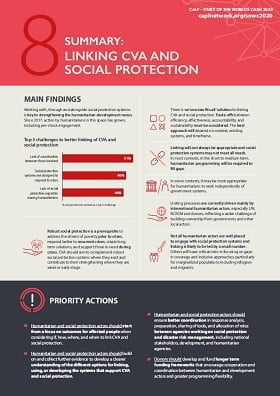
State of the World’s Cash 2020 Chapter 8 summary: Linking CVA and social protection
Report
Longstanding efforts to strengthen links between humanitarian CVA and social protection have been accelerated by the COVID-19 pandemic, with significant progress since the last report. CVA should aim to complement robust social protection systems where they exist and contribute to their strengthening where they are weak or early-stage. This chapter asks: ‘What opportunities and challenges...
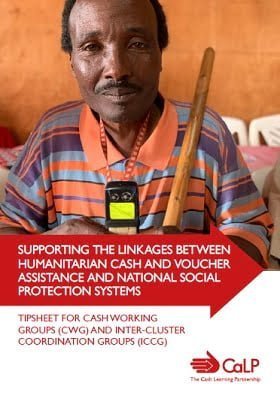
Supporting the Linkages Between Humanitarian Cash and Voucher Assistance and National Social Protection Systems
Report
This tipsheet aims to support country-level coordination efforts to strengthen the engagement between humanitarian coordination groups that implement cash and voucher assistance (CVA) and existing social
protection or disaster risk reduction coordination actors and groups. In particular, it seeks to offers inter-cluster and cash working group coordinators simple practical tips for engaging...
Case Studies

Linking CVA and Social Protection in the MENA Region – Crib sheet
Report
Building linkages between humanitarian cash and voucher assistance (CVA) and social protection (SP) has become an increasingly prominent topic over the past five years and the Middle East and North Africa (MENA) region has been at the centre of this evolution. The objective of this resource set (the crib sheet and 3, soon to be 6, regional case studies) is to ensure that the CALP Network...
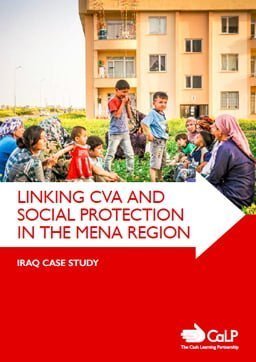
Linking CVA and Social Protection in the MENA Region – Iraq Case Study
Report
Building linkages between humanitarian cash and voucher assistance (CVA) and social protection (SP) has become an increasingly prominent topic over the past five years and the Middle East and North Africa (MENA) region has been at the centre of this evolution. The objective of this resource set (the crib sheet and 3, soon to be 6, regional case studies) is to ensure that the CALP Network...

Linking CVA and Social Protection in the MENA Region – Lebanon Case Study
Report
Building linkages between humanitarian cash and voucher assistance (CVA) and social protection (SP) has become an increasingly prominent topic over the past five years and the Middle East and North Africa (MENA) region has been at the centre of this evolution. The objective of this resource set (the crib sheet and 3, soon to be 6, regional case studies) is to ensure that the CALP Network...
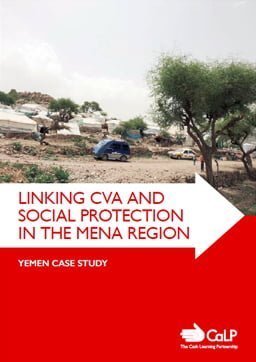
Linking CVA and Social Protection in the MENA Region – Yemen Case Study
Case Study
Building linkages between humanitarian cash and voucher assistance (CVA) and social protection (SP) has become an increasingly prominent topic over the past five years and the Middle East and North Africa (MENA) region has been at the centre of this evolution. The objective of this resource set (the crib sheet and 3, soon to be 6, regional case studies) is to ensure that the CALP Network...

Linking Cash and Voucher Assistance (CVA) and Social Protection – Occupied Palestinian Territories (OPT): Country Summary
Report
This country summary is part of a larger resource set, providing practitioners with examples of different approaches to linking CVA
and social protection.
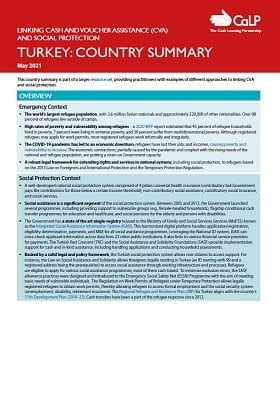
Linking Cash and Voucher Assistance (CVA) and Social Protection – Turkey: Country Summary
Report
This country summary is part of a larger resource set, providing practitioners with examples of different approaches to linking CVA
and social protection.
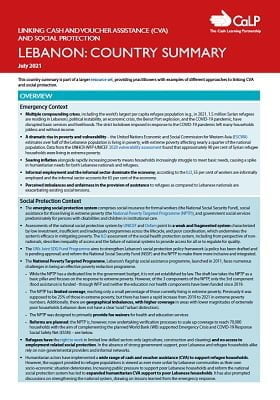
Linking Cash and Voucher Assistance (CVA) and Social Protection – Lebanon: Country Summary
Report
This country summary is part of a larger resource set, providing practitioners with examples of different approaches to linking CVA
and social protection.
Thematic lead
Latest
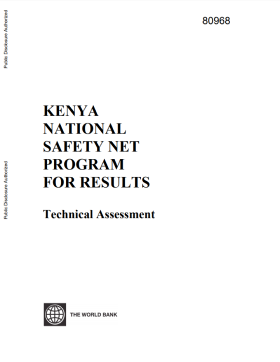
Technical Assessment of the Kenya National Safety Net Program for Results
Report
One of the priorities outlined in the National Social Protection Policy (NSPP) in Kenya, is the government’s ambition to enhance social assistance by developing the necessary institutions and strengthening operational systems while expanding the coverage of such programmes. To help realise this policy...

Guidance for DFID country offices on measuring and maximising value for money in cash transfer programmes
Guidelines and Tools
This document is a revised edition of Guidance for DFID country offices on measuring and maximising value for money in cash transfer programmes which DFID published in October 2011.
The guidance is in two linked parts:
1. Part 1 provides a toolkit which sets out key concepts and metrics for analysing...
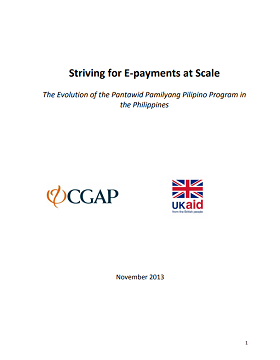
Striving for E-Payments at Scale in the Philippines
Report
As the Philippines experienced economic growth in the early 2000s, it still saw a rise in poverty. The Pantawid Pamilyang Pilipino Program (4Ps) is a conditional cash transfer program that aims to provide short-term poverty alleviation for poor households. The program emerged out of the country’s...
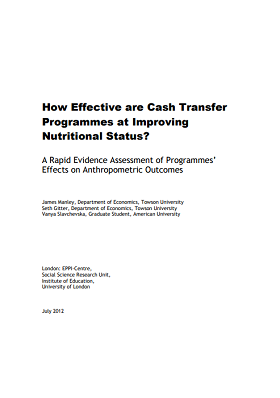
How Effective are Cash Transfer Programmes at Improving Nutritional Status?
Report
Cash transfer programmes are a widely applied social protection scheme that has achieved successes in fighting poverty worldwide. A large literature has sprung up around these programmes, yet the relationship between cash transfer programmes and the nutritional status of recipient children is unclear. Can...
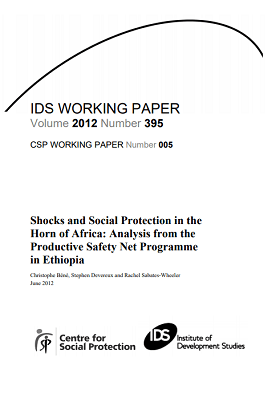
Shocks and Social Protection in the Horn of Africa: Analysis from the Productive Safety Net Programme in Ethiopia
Case Study
Using panel data from the Ethiopian Productive Safety Net Program, this paper explores the degree to which this social protection programme has been successful in protecting its beneficiaries against the various shocks that have affected the Horn of Africa in the recent past. The analysis suggests that...
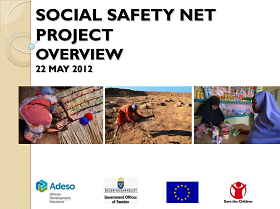
Social Safety Net Project Overview
Presentation
This presentation provides an overview of a three-year social safety net project being implemented by a consortium of Adeso and Save the Children (UK), with the overall aim to reduce community vulnerability to chronic food insecurity in two regions of Somalia/Somaliland identified as being highly...
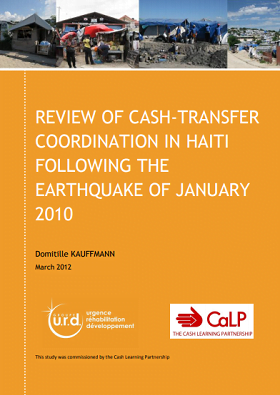
Review of Cash-transfer Coordination in Haiti following the Earthquake of January 2010
Case Study
This study, commissioned by the CALP Network, aims to review and document the coordination of cash transfer programmes (CTP) implemented from the emergency phase in Haiti. It is part of a wider review of CTP coordination in emergency situations which includes three case studies (Pakistan, Haiti and the...
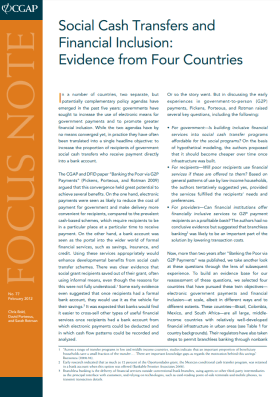
Social Cash Transfers and Financial Inclusion: Evidence from four countries
Report
This focus note from CGAP looks at social cash transfers and how this is being used to improve financial inclusion. To do so they look at examples from Brazil, Colombia, Mexico and South Africa. The focus note compares the various payment approaches, how these interlink with the respective government...
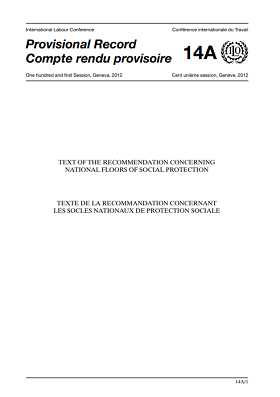
Text of the Recommendation Concerning National Floors of Social Protection
Report
Further to the International Labour conference 101st session, the International Labour Organization adopted a new international work. Recommendation concerning the implementation of quick national social protection floors and the progressive extension of social safety for all. Social protection floors are...
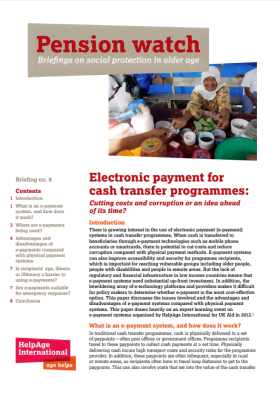
Pension Watch Briefing #8: Electronic payment for cash transfer programmes
Policy paper
There is growing interest in the use of electronic payment (e-payment) systems in cash transfer programmes. When cash is transferred to beneficiaries through e-payment technologies such as mobile phone accounts or smartcards, there is potential to cut costs and reduce corruption compared with physical...
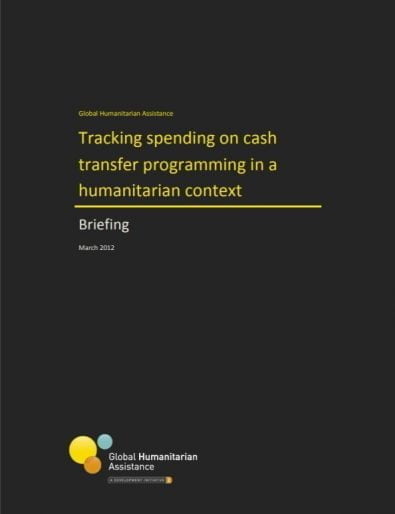
Tracking Spending on Cash Transfer Programming in a Humanitarian Context
Report
This briefing paper provides a brief overview of cash transfers by situating them within official development assistance (ODA) analysis. However, the core of this analysis concentrates on tracking cash transfer programme spending in humanitarian aid. For analysis of cash transfer spending in crisis...
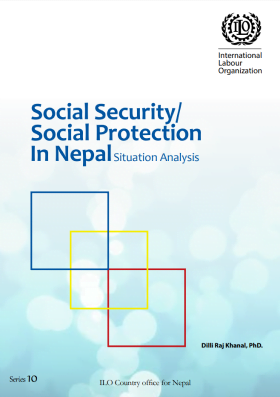
Social Security/Social Protection In Nepal: Situation analysis
Report
The International Labour Conference has outlined several strategies to extend social security by closing coverage gaps and pointed out that effective national strategies should be formed in line with national priorities, administrative feasibility and affordability. The primary goal is to ensure that no...
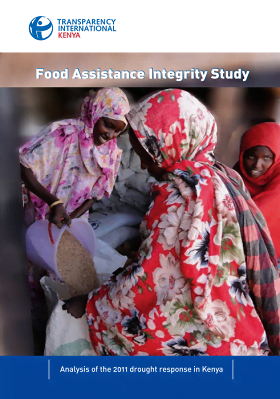
Transparency International Kenya: Food Assistance Integrity Study
Report
The Food Assistance Integrity Study highlights various food approaches in Kenya with the aim of enhancing integrity, accountability, efficiency and cost effectiveness in the implementation of food assistance programs. The study uncovered evidence of critical flaws in the food assistance chain and...

Good Practice Review 11: Cash transfer programming in emergencies
Guidelines and Tools
The GPR is intended for humanitarian practitioners who plan and implement emergency responses – both those who are already familiar with cash-based interventions and those who are not. It synthesises cash transfer guidelines, highlights lessons from evaluations and adds practical examples drawn from...
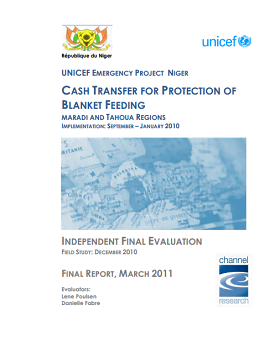
Cash Transfer for Protection of Blanket Feeding: Maradi and Tahoua regions
Report
The Project ‘Cash Transfer to Protect Blanket Feeding’ in Niger was launched by UNICEF in June 2010. The Project was a direct response to the growing evidence that blanket supplementary feeding rations distributed to children of 6 to 23 months of age in food insecure communities were consumed by older...
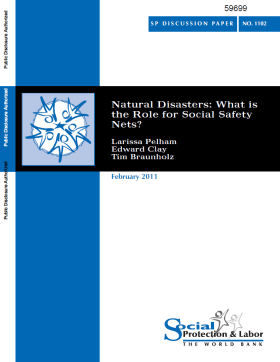
Natural Disasters: What is the role for social safety nets?
Policy paper
This paper makes the case for why safety nets are an important tool for managing the risk of natural hazards. The use of safety nets is advocated both ex ante, to prevent and mitigate the impact of natural disaster and ex post, to cope with the impacts of natural shocks. Firstly, the paper explores the...

Protection
Guidelines and Tools
Protection mainstreaming is a practical, efficient and effective means to maximise the protective impact of aid programming. Through incorporating protection principles into aid design and delivery, humanitarian actors can:
Promote the human rights of affected populations
Enhance affected populations’...

Korogocho Cash Transfer Initiative: Supporting ‘Transformative Social Protection’ in the Kenyan Urban Slums
Case Study
This case study looks at Concern Worldwide’s work with the Kenyan government to introduce the concept of transformative social protection (which acknowledges that vulnerability is not only related to income, and seeks to complement cash transfers with components addressing further vulnerabilities) to...
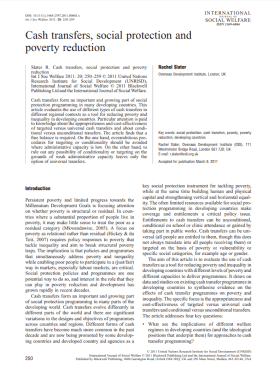
Cash Transfers, Social Protection and Poverty Reduction
Policy paper
Cash transfers form an important and growing part of social protection programming in many developing countries. This article evaluates the use of different types of cash transfers in different regional contexts as a tool for reducing poverty and inequality in developing countries. Particular attention is...

Nairobi Urban Social Protection Programme
Case Study
This case study of an Oxfam urban cash transfer programme in Kenya looks at how cash can be used as part of a national social protection programme to improve access to food of the most vulnerable households, at the same time as developing longer term food and income security initiatives. The report looks...

